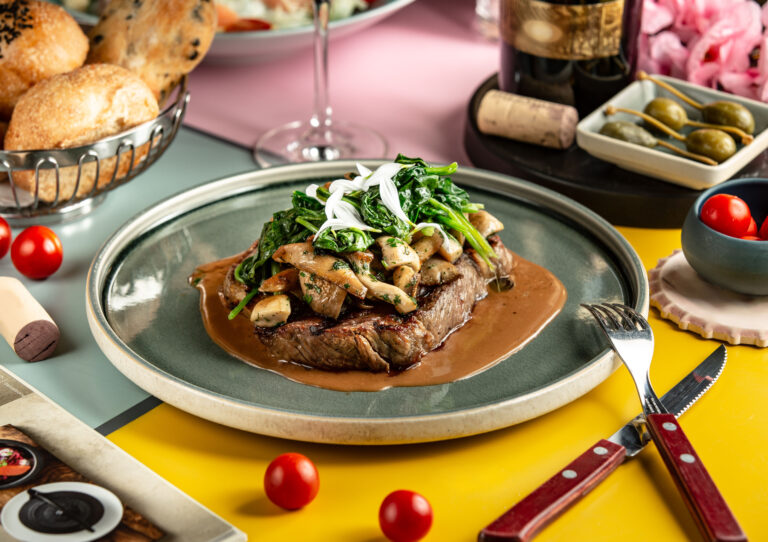
Бишкоти ди Прато
Бишкоти ди Прато, also known internationally as Cantuccini or Biscotti di Prato, are classic Italian cookies that have become a symbol of Tuscany’s culinary artistry. Originating from the small town of Prato, near Florence, these twice-baked golden biscuits are crisp, aromatic, and wonderfully rich in almond flavor. Simple yet elegant, they’re made from just a few ingredients — flour, sugar, eggs, almonds, and baking powder — but the result is a cookie that’s both rustic and refined. Traditionally, бишкоти ди прато are served with the sweet Italian dessert wine Vin Santo, though they’re equally delightful when enjoyed with coffee, tea, or even a cup of hot cocoa.
The Origins of Бишкоти ди Прато
The story of бишкоти ди прато goes back centuries, to the heart of Tuscany during the Renaissance period. The very word biscotti comes from the Latin bis coctus, meaning “twice baked.” This unique baking process — first shaping the dough into loaves, baking it, then slicing and baking again — gives the cookies their signature crunchy texture. In early times, this technique was more than just a culinary choice: it was a practical one. Twice-baked biscuits could last for months without spoiling, making them ideal provisions for soldiers, travelers, and sailors.
It’s believed that the first official record of бишкоти ди прато dates back to 1691, when a Tuscan baker from Prato documented the recipe in a regional cookbook. Over time, these simple almond biscuits became a favorite throughout Italy — not only for their taste but for the sense of warmth and tradition they carried. Today, they remain one of the most recognized Italian desserts in the world.
The Art of Making Бишкоти ди Прато
At first glance, the ingredients for бишкоти ди прато seem humble, but their preparation requires care and balance. The dough is made with all-purpose flour, sugar, and eggs — no butter or oil — which gives the cookies their firm texture. Whole almonds, often toasted for extra flavor, are added directly into the dough. Once shaped into logs, the dough is baked until lightly golden, then removed from the oven, sliced diagonally, and baked again.
This double baking process is what gives the biscuits their legendary crispness. The result is a cookie that’s firm but not overly hard, perfect for dipping. When dunked into Vin Santo, espresso, or tea, the biscuit softens just enough to reveal its full nutty aroma and subtle sweetness.
Some modern variations of бишкоти ди прато include pistachios, hazelnuts, or even bits of chocolate. However, traditionalists insist that the classic almond version remains the most authentic representation of Tuscany’s culinary heritage.
A Perfect Pairing
In Tuscany, бишкоти ди прато are rarely eaten alone. The classic pairing is with Vin Santo, a rich, amber-colored dessert wine made from dried grapes. The ritual is simple yet special: dip the biscotti briefly into the wine, allow it to soak up a bit of sweetness, and enjoy the harmony of flavors.
Outside Italy, these cookies have found their way into breakfast tables and cafés everywhere. They’re often served with espresso or cappuccino, and many people enjoy them as an afternoon treat or after-dinner dessert. Their sturdy texture also makes them ideal for gifting, as they travel well and stay fresh for weeks when stored in an airtight container.
The Cultural Symbol of Tuscany
To Italians, бишкоти ди прато are more than just cookies — they’re a piece of cultural heritage. In Prato, local bakeries still follow traditional recipes passed down through generations. Each batch is made with pride and respect for the region’s history. The combination of simplicity, longevity, and taste makes these biscuits a perfect symbol of Tuscan hospitality: humble yet rich, straightforward yet sophisticated.
Their popularity has spread far beyond Italy’s borders. Today, you can find бишкоти ди прато in pastry shops and supermarkets around the world. Yet, nothing quite compares to tasting them fresh from a bakery in Prato, where the aroma of roasted almonds fills the air and the biscotti are baked just as they were centuries ago.
How to Enjoy Бишкоти ди Прато at Home
If you’d like to experience бишкоти ди прато yourself, they’re surprisingly easy to make. Here’s a simple overview of the process:
-
Prepare the dough – Mix flour, sugar, baking powder, and eggs until you get a soft, sticky dough. Add whole almonds.
-
Shape and bake – Form the dough into logs and bake until golden.
-
Slice and bake again – Cut the logs diagonally into slices and bake a second time to achieve the signature crunch.
-
Cool and store – Let the cookies cool completely before storing them in an airtight container.
Homemade biscotti can be customized with different nuts, citrus zest, or even a drizzle of dark chocolate — but the original almond version remains a timeless favorite.
conclusion
Every bite of бишкоти ди прато tells a story — of Tuscan hills, ancient ovens, and the Italian love for simple pleasures. It’s a cookie that has survived centuries without losing its charm, connecting generations through its crisp texture and comforting flavor. Whether you dip it in wine, coffee, or cocoa, each crunchy bite brings a taste of Italy’s warmth and tradition to your table.
So, the next time you crave something both simple and elegant, reach for a piece of бишкоти ди прато — the little biscuit from Prato that has conquered the world, one crunch at a time.







